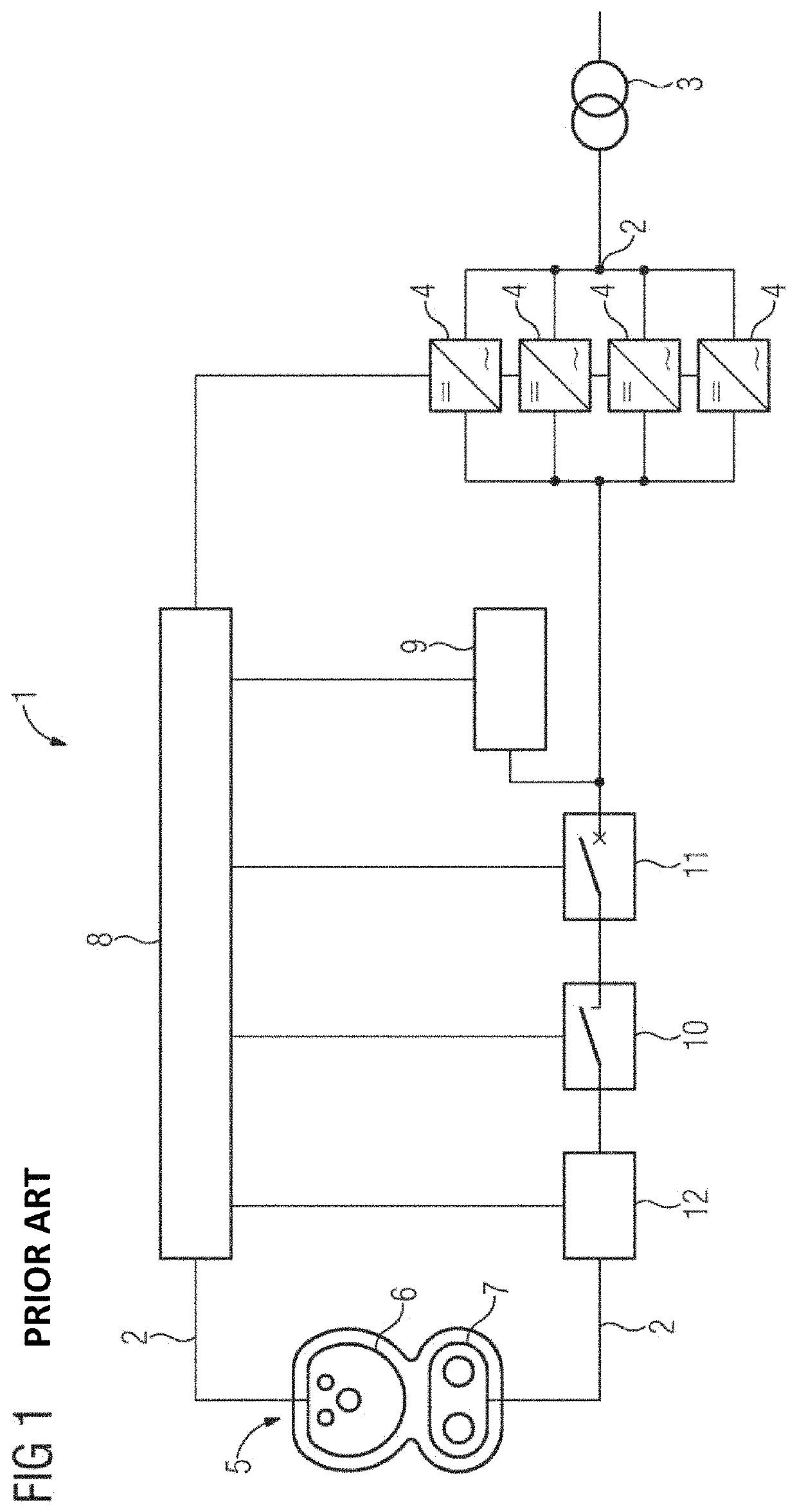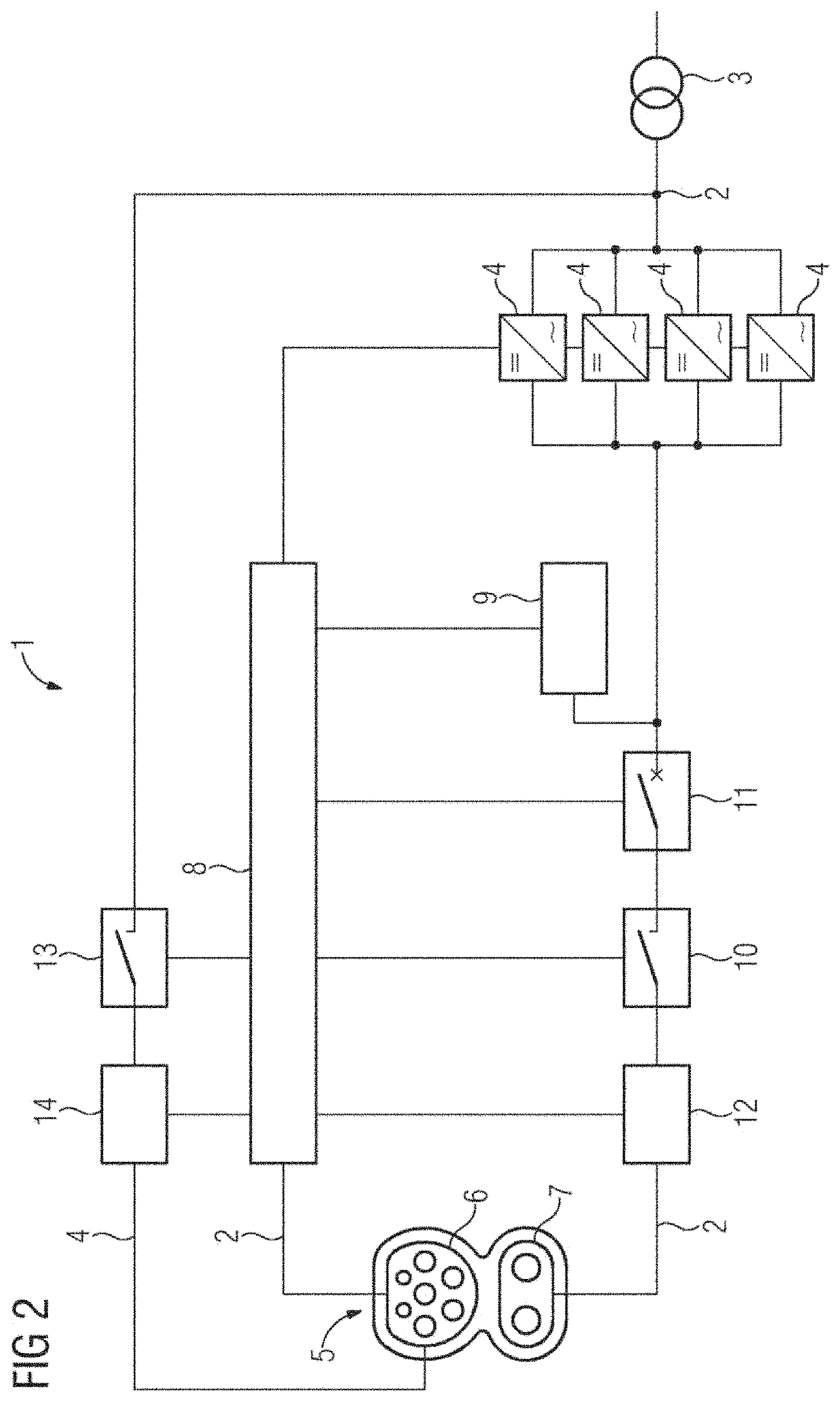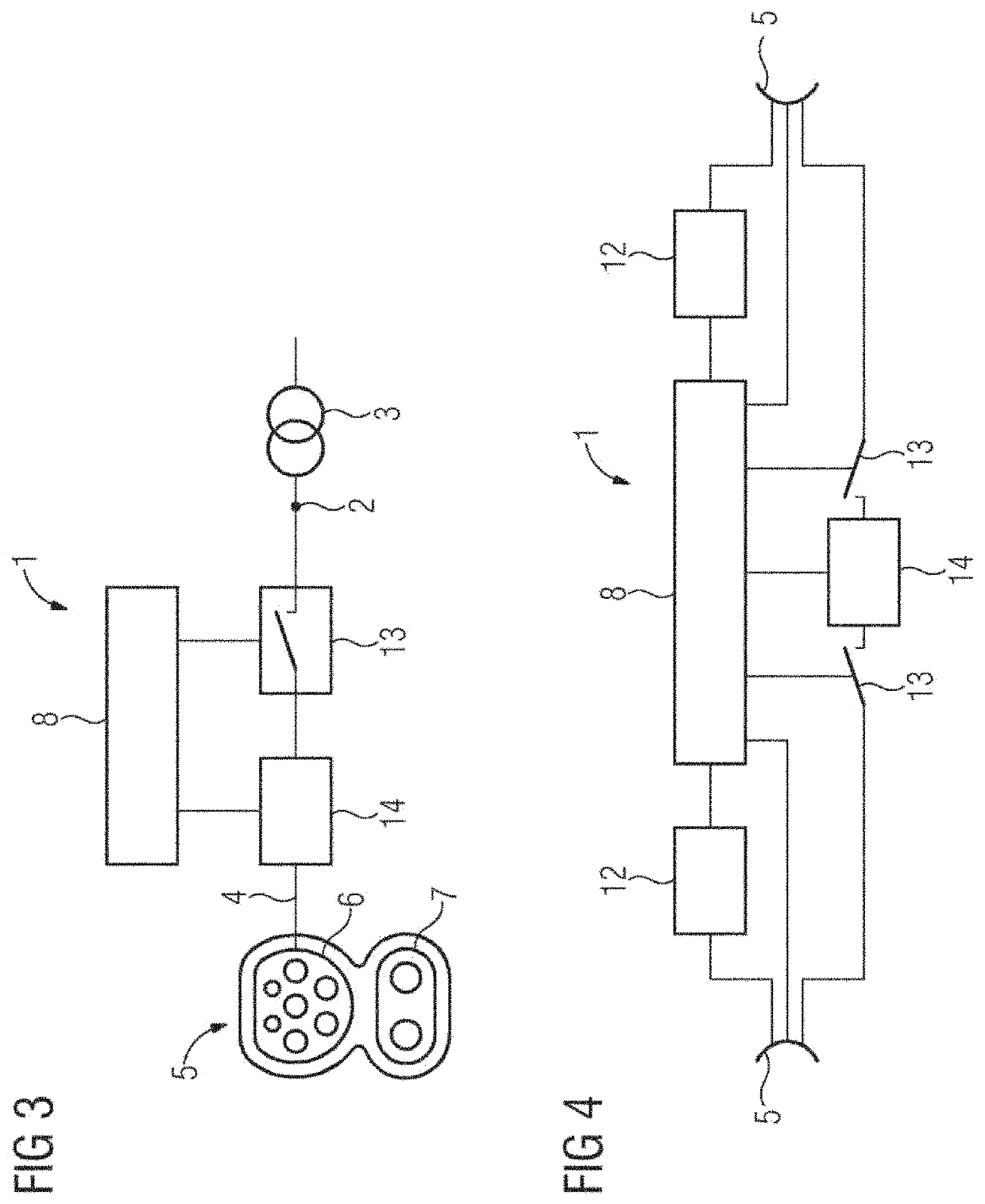Charging systems for charging electrical energy storage devices of electric vehicles and associated methods
a charging system and electric vehicle technology, applied in charging stations, propulsion parts, transportation and packaging, etc., can solve the problems of limited achievable dynamic range of measuring converters and measuring meters, inability to measure electrical energy or power in a manner,
- Summary
- Abstract
- Description
- Claims
- Application Information
AI Technical Summary
Benefits of technology
Problems solved by technology
Method used
Image
Examples
Embodiment Construction
[0036]FIG. 1 depicts a charging system 1 in accordance with the prior art in a schematic illustration. The charging system 1 includes an input 2, which is connected to an electrical energy source 3. The electrical energy source 3, which may be provided by a power supply system, for example, serves to provide an alternating current and / or an AC voltage. Furthermore, the charging system 1 includes at least one converter element 4. In the present exemplary embodiment, the charging system 1 includes four converter elements 4, which are electrically connected in parallel. The converter elements 4 are rectifiers. The alternating current present at the input 2 may be converted into a direct current by the rectifiers or the converter elements 4.
[0037]Furthermore, the charging system 1 includes a charging output 5, to which an electric vehicle may be connected in order to charge the electrical energy storage device of the electric vehicle. The charging output 5 includes an AC part 6, which m...
PUM
 Login to View More
Login to View More Abstract
Description
Claims
Application Information
 Login to View More
Login to View More - R&D
- Intellectual Property
- Life Sciences
- Materials
- Tech Scout
- Unparalleled Data Quality
- Higher Quality Content
- 60% Fewer Hallucinations
Browse by: Latest US Patents, China's latest patents, Technical Efficacy Thesaurus, Application Domain, Technology Topic, Popular Technical Reports.
© 2025 PatSnap. All rights reserved.Legal|Privacy policy|Modern Slavery Act Transparency Statement|Sitemap|About US| Contact US: help@patsnap.com



